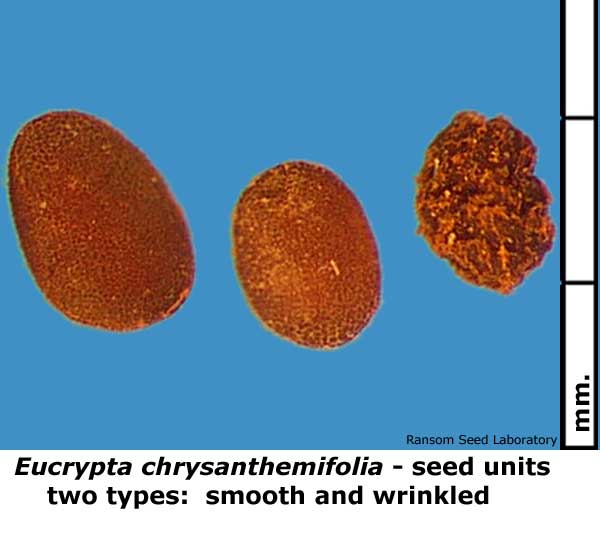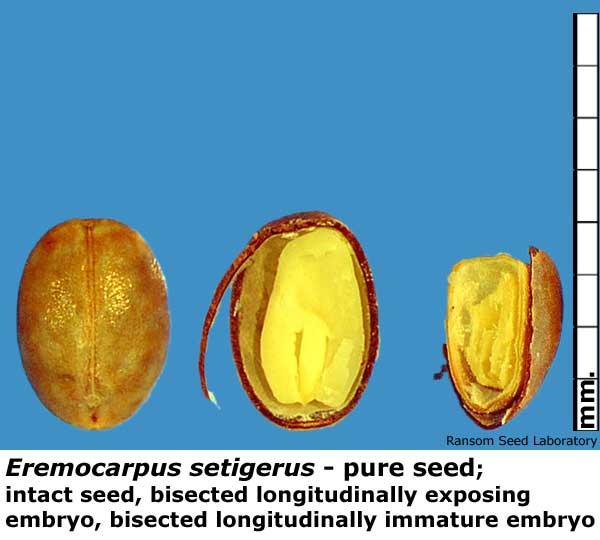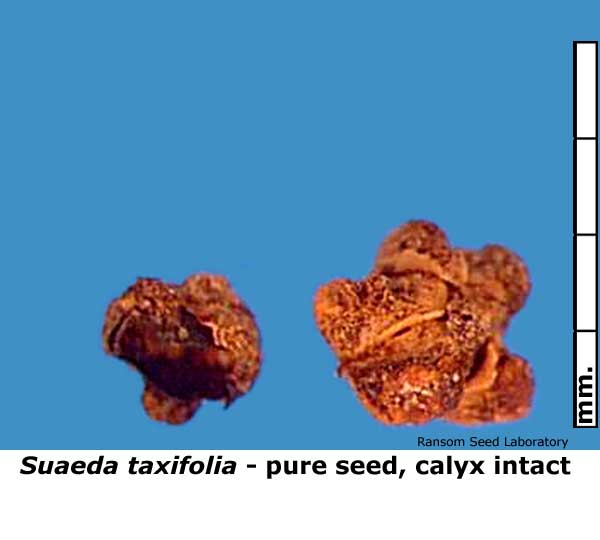Clarkia bottae (Spach) Harlan Lewis & M. Lewis
Punchbowl godetia
Family: Onagraceae
Habit: Annual, erect, to 1 m.; glabrous, glaucous; with lavender inflorescence.
Distribution: Found in openings in chaparral, woodland and coastal scrub of South Coast and Peninsular Ranges of California.
Seed unit: Free seed.
Seed: Seed brown, .5 to 2 mm., angled, scarcely if at all crested. In elongate, indehiscent capsule.
Embryo: Linear embryo with no endosperm.
Purity instructions: Pure seed definition:
AOSA: PSU #1 – Seed, with or without seed coat. Piece of broken seed, with or without seed coat, larger than one-half the original size.
ISTA: PSD #10 – Seed, with or without testa. Piece of seed larger than one-half the original size, with or without testa.
Lab notes: Pale intact seeds, possibly devoid of embryo, considered pure.
Average pure seed units per gram: 4,990 seeds per gram (based on AOSA pure seed units only from 3 samples received for testing from 1996 to 2004).
Range of percent pure seed: 97 to 98%
Range of percent inert: 1 to 2%
Description of inert: Plant material, insects, dirt.
Planting instructions: 400 seeds, TB, 21 days @ 15°C; for fresh and dormant seed, prechill with GA3 recommended.
References: (link to main reference page)
Hickman, J.C., Ed. 1993. p. 789.
Munz, P.A. and D.D. Keck. 1968. p. 940.
Ransom Seed Laboratory








































